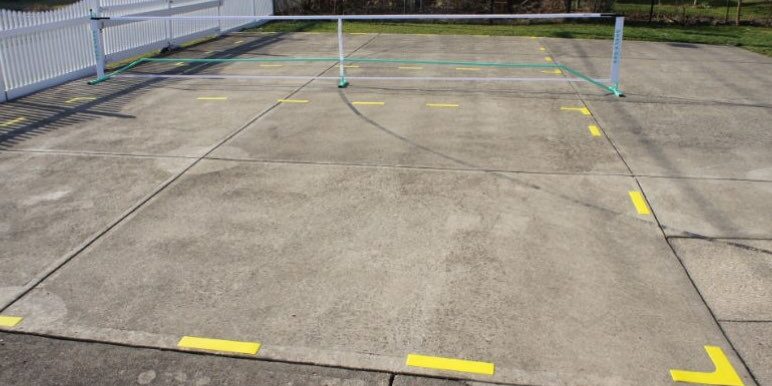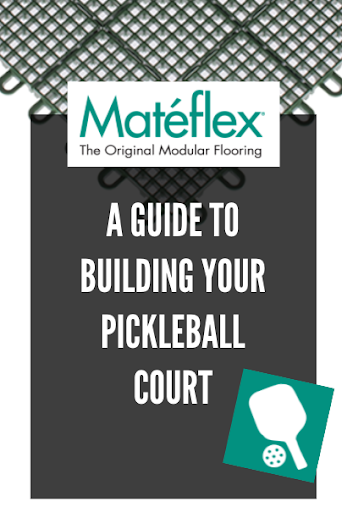Pickleball Court Construction-- Essential Tips for a Sturdy Court
Pickleball Court Construction-- Essential Tips for a Sturdy Court
Blog Article
Lasting Practices in Pickleball Court Building And Construction You Must Know
As the appeal of pickleball remains to rise, so also does the requirement for lasting practices in court building and construction. This approach not only addresses ecological problems yet likewise boosts the durability and functionality of the courts. From choosing environmentally friendly materials to executing reliable water drainage and energy-saving illumination options, there are numerous approaches to think about. The influence of these techniques extends far beyond the court itself. Comprehending exactly how each aspect adds to a more sustainable future invites even more exploration right into the elaborate equilibrium in between entertainment development and ecological stewardship.
Choosing Eco-Friendly Products
Choosing green materials is an essential action in the construction of lasting pickleball courts. The choice of sustainable products not just minimizes ecological influence but likewise boosts the long life and performance of the court. Trick materials include reused rubber for the surface, which provides outstanding toughness and shock absorption while drawing away waste from land fills.
In addition, utilizing locally sourced products minimizes transport discharges and supports regional economies. Pickleball court construction. Using indigenous hardwoods for fencing and seats can give a sustainable visual while making sure resilience versus the components.
Integrating absorptive products for court structures can further contribute to sustainability by permitting natural water drainage and minimizing overflow. These selections not only safeguard regional ecological communities however also advertise much healthier play atmospheres.
Reliable Drainage Solutions
While the choice of environmentally friendly products is essential, applying reliable drain remedies is similarly essential for maintaining sustainable pickleball courts. Proper water drainage not only shields the court surface area from water damages however also decreases disintegration and drainage, advertising environmental stability.
Efficient drainage systems can include absorptive paving, which enables water to infiltrate the ground instead than merging on the surface. This lowers the possibility of standing water, which can result in mold and other maintenance concerns. Furthermore, integrating tactically placed drainage channels and swales can direct excess water away from the court area, guaranteeing a dry having fun surface area and preventing dirt erosion.
Making use of native vegetation in the landscape design around the courts can even more boost drainage by absorbing excess water and minimizing runoff. These plants call for less irrigation and promote biodiversity, straightening with sustainable methods.
Additionally, it is important to routinely keep the drainage system to ensure its lasting efficiency. This consists of clearing particles and monitoring for obstructions. By focusing on effective water drainage services, pickleball court constructors can dramatically add to the sustainability and long life of the facility, ultimately profiting both players and the atmosphere.
Energy-Efficient Illumination Options
As the need for pickleball continues to expand, incorporating energy-efficient illumination options into court layout has come to be progressively vital for sustainability. Standard lighting systems typically eat excessive energy, contributing to higher operational prices and environmental impact. Taking on modern, energy-efficient innovations is essential for both new constructions and improvements.
LED (Light Emitting Diode) lights stands apart as a top option due to its durability and power financial savings (Pickleball court construction). Compared to standard lights, LEDs use around 75% less power and can last as much as 25 times much longer, dramatically minimizing maintenance prices. The directional nature of LED lights decreases light contamination, making sure that lighting is focused on the court instead than bordering areas.

Sustainable Surface Alternatives
Exploring lasting surface area choices for pickleball courts has actually obtained grip amongst players and contractors alike. Going Here The focus on green materials not only straightens with the growing environmental understanding but additionally boosts the performance and durability of the courts.
This material provides excellent shock absorption, minimizing the risk of injuries for gamers while advertising sustainability. These ceramic tiles are simple to change and set up, and their convenience allows for various court setups.
All-natural grass courts are likewise emerging as a sustainable option, promoting biodiversity and lowering the warm island impact. They require regular upkeep and water, which may not align with all sustainability objectives.

Water Conservation Methods

One more efficient method entails the installment of rainwater harvesting systems. These systems gather and save rainwater for usage in maintaining court surfaces and landscape design. This approach not only saves drinkable water click this site but likewise lowers dependence on local sources.
In addition, utilizing drought-resistant landscape design around the courts is crucial. Native plants call for much less water and are much better adapted to regional environment conditions, therefore reducing overall water consumption. Additionally, making use of effective irrigation systems, such as drip watering, guarantees that water is supplied straight to plant roots, decreasing evaporation and waste.
Conclusion
Incorporating lasting practices in pickleball court construction dramatically contributes to environmental preservation and source performance. By focusing on these practices, the construction of pickleball courts can line up with wider environmental objectives while advertising durability and functionality within areas.
As the popularity of pickleball proceeds to climb, so too does the need for lasting practices in court building.Selecting environment-friendly products is a critical step in the construction of sustainable pickleball courts. By prioritizing energy-efficient lighting options, pickleball court producers can add to a much more lasting future while fulfilling the demands of players and stakeholders alike.Incorporating sustainable surface choices not only boosts the efficiency of pickleball courts however likewise leads the way for implementing effective water preservation strategies.Incorporating lasting practices in pickleball court building substantially contributes to ecological preservation and source performance.
Report this page